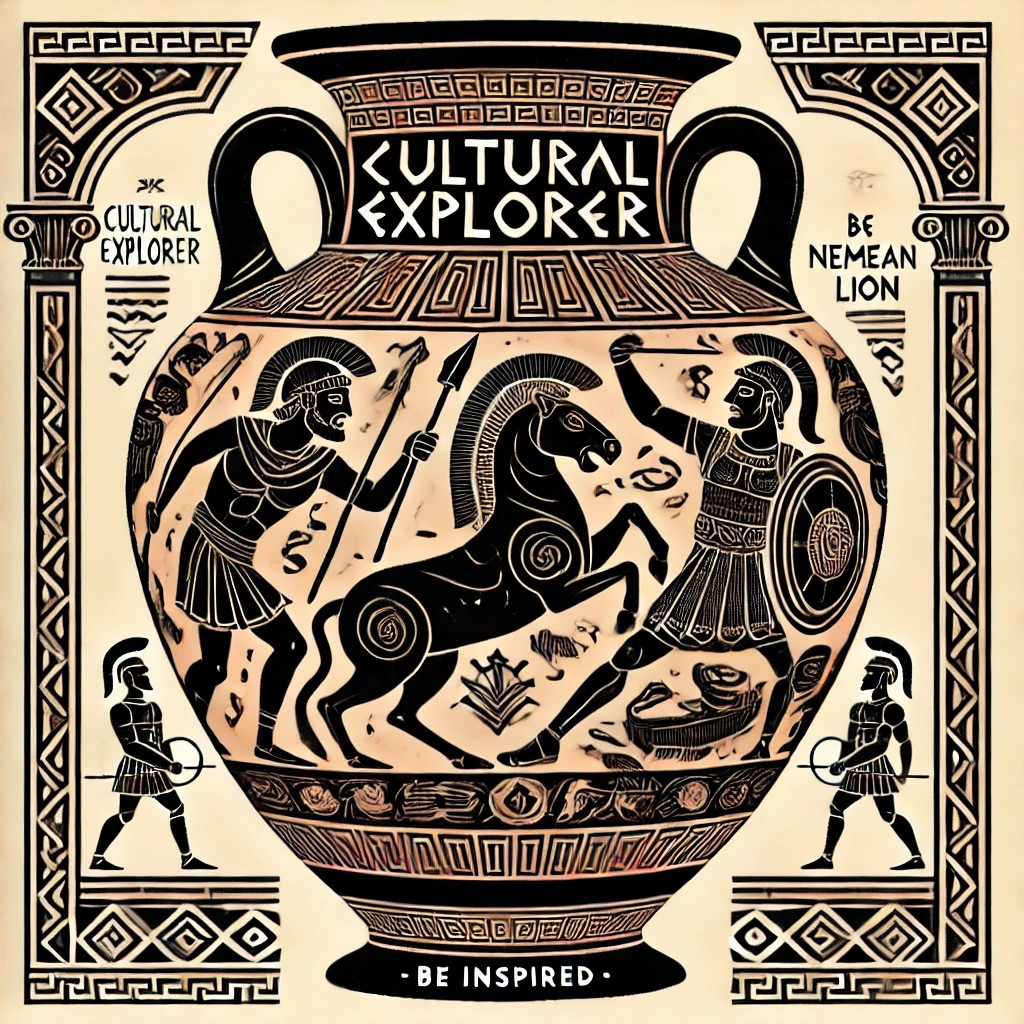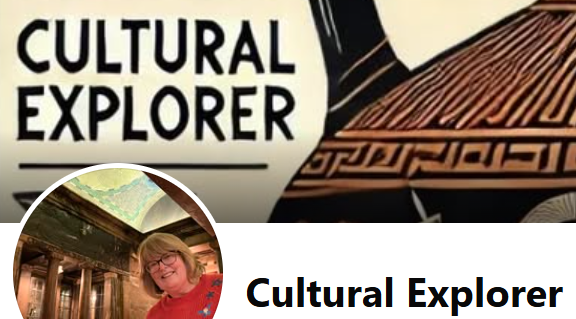- HOME
- Cultural Explorer Itineraries
- Cultural Explorer Travel
- Cultural Explorer Books
- Cultural Explorer Art
- Cultural Explorer Auction Houses
- Travel, Culture and Books - Blog
- More
- England
- Europe
- United States
- Spain
- Denmark
- Germany
- England - Yorkshire
- England - London
- England - Durham
- England - Liverpool
- England - Stratford upon Avon
- Spain - Cadiz, Jerez, Madrid
- Spain - Barcelona
- Spain - Sevilla
- Spain - Malaga and Ronda
- France - Paris
- Boston and New Haven Logisitics - Itinerary, travel, accommodation
- Boston Freedom Trail, Tea Party and Cheers
- New Haven and Yale University
- Hartford - Mark Twain's House
- Boston Art Museums - MOFA and Isabella Stewart Gardner
- Harvard and MIT Museums
- Cultural Explorer Travel - Top 10 Museums in London
- Cultural Explorer Travel - Top 10 Museums Yorkshire
- Cultural Explorer Art - Top 10 Art Galleries in London
- Cultural Explorer Art - Top 10 Controversial Paintings
- Cultural Explorer Art - The Life of the Mona Lisa
- Cultural Explorer Art - The Bowes Museum - Norman Cornish and LS Lowry
- Cultural Explorer Art - Top 10 Art Galleries in Yorkshire
- Cultural Explorer Books - Top 15 Books about Art
- Cultural Explorer Books - From a North East American Trip
- Cultural Explorer Books - Top 10 Books about Spain
- Cultural Explorer Books - Top 10 Latin American Books
- Cultural Explorer Books - Top 10 Greek Myths Books
- Cultural Explorer Books - Top 15 United States Contemporary Fiction Books
- Cultural Explorer Books - Top 10 Non-Fiction about the US
- Cultural Explorer Books - Top 10 Japan Books
- Cultural Explorer - Top 10 Books about Humans
- Cultural Explorer Auction House - Sotheby's
- Cultural Explorer Auction House - Christies
- Cultural Explorer Auction House - Bonhams
- Cultural Explorer Auction House - Phillips
- ads.txt
- Terms and Conditions

A week in Malaga, and a day in Ronda.
Malaga is a beautiful city - with a scenic harbour, big yachts, lighthouse, beaches, the Pompidou cube, and the Alcazaba.
Malaga is a great place to visit. We also travelled by train from Malaga to the impressive town of Ronda.
The Museo de Malaga - Archaeology
https://www.museosdeandalucia.es/web/museodemalaga
The Museo de Málaga’s archaeological collection has its origins in the efforts of 19th-century collectors, the
Marquises of Casa-Loring. They began collecting artefacts for their estate, La Concepción, which they intended to share with the public. Additionally, items from various local excavations, including the Alcazaba of Málaga, were added, further enriching the museum's holdings.
The museum spans from
Prehistoric artefacts to items from the
Catholic
Church’s influence, highlighting the region's transformation across eras. Prehistoric displays include tools and pottery, providing a glimpse into early human activity in Málaga. Moving through the
Phoenician and
Roman periods, visitors see the city’s development as a significant port with artefacts such as amphorae and mosaics illustrating daily life and commerce. The
Islamic period is represented by intricate ceramics and architectural pieces, marking Málaga's role within Al-Andalus. Artefacts from the Christian reconquest complete the journey, illustrating the cultural shift as Catholicism gained prominence and transformed the region’s identity.
My Top 3 items in the archaeological museum are:
1) The Greek Warrior, whose green, grand, finely detailed, Corinthian-style bronze helmet we see, was discovered in 2012 during an excavation between Jinete and Refino Streets in Málaga’s historic centre. His tomb, dating to the 6th century BCE, also included other grave goods, including an engraved scarab pendant and a silver plate, emphasising the cultural exchanges in the region and making it one of the most remarkable archaeological finds in Spain.
2) The 3rd century
Venus Mosaic
was discovered accidentally on January 5, 1956, in Cártama, near the ancient Iberian and Roman city of Cartima. It is a depiction of Venus, emerging from the sea, reclining on a shell, and flanked by two dolphins.
3) The
Medallion, found in a Phoenician hypogeum in Trayamar, dates back to the 7th century BC. It is made from a mixture of materials, including gold for the serpent and granules for the body. This symbolic piece features an Uraeus serpent, flanked by falcons of Horus, along with a solar disc and crescent moon, showcasing a blend of Phoenician and Egyptian artistic influences.
The Museo de Malaga - Fine Art
https://www.museosdeandalucia.es/web/museodemalaga
The
fine arts
section of the Museo de Málaga was established in 1915, the museum also houses paintings from the San Telmo Academy and major institutions like the Prado and Reina Sofía, enriching its representation of Spanish artistic heritage.
These were my top 5 paintings at the Museo de Málaga:
1) The
Boceto para la decoración del techo del Teatro Cervantes de Málaga 1870 by Bernardo Ferrándiz and Antonio Muñoz Degraín - this painting captures an allegorical vision of Málaga's vibrant economy, culture, and industry, with key local landmarks the Gibralfaro and the Alcazaba.
2) Enrique Simonet, produced this large painting, The Autopsy (also known as And She Had a Heart!), after studying in Rome. The painting captures the moment a forensic doctor performs an autopsy on a young woman lying on a table.
3) Retrato de la bailarina malagueña Anita Delgado by Cuban-Spanish artist Federico Beltrán Massés - this painting shows Anita Delgado, a young woman of humble origins who, after marrying the Maharaja of Kapurthala in 1908, became a maharani.
4) Los de Igueriben están muriendo by Antonio Muñoz Degrain captures the dramatic last moments of Spanish soldiers during the Rif War, at the Siege of Igueriben in 1921.
5) Bernardo Ferrándiz Bádenes - Dying Moments: Kicking a Man When He’s Down,”), 1881 From Museum of Malaga label: This allegorical composition alludes to an episode in the artist’s life. A man of choleric temperament, he had a run-in with a fellow Academy member… which resulted in Ferrandiz being tried and sent to prison. Deeply shaken by this event, which led to his removal from the post of director of the San Telmo Fine Art School and social and personal disgrace, the once-haughty artist depicted himself as the skeleton of a cat. Only then, when the feline is “down,” so to speak, does the weakest of its sworn enemies, the mouse, dare to scurry among its remains.
The Picasso Museum
https://www.museopicassomalaga.org/en
The Picasso Museum in Málaga is a tribute to the city’s most famous son,
Pablo Picasso, showcasing a remarkable collection of his works. Housed in the stunning Buenavista Palace, a 16th-century building with Andalusian Renaissance architecture, the museum offers a journey through Picasso's artistic evolution, from early sketches to later works in painting, sculpture, ceramics, and prints.
The current exhibition is
Pablo Picasso: Structures of Invention. The Unity of a Life’s Work which offers visitors a chance to see relationships across Picasso’s career by combining works from different decades, this emphasises the artist’s creative continuity, his different styles and techniques and the events of his life.
Despite the great variety of Picasso’s art, his subject matter is largely restricted to the traditional forms of western art: the human figure, still life, and landscape. The themes of Picasso’s universe – the bullfight, family, and eroticism, among others – are presented in the exhibition in oils, prints, sculptures and ceramics across a wide range of his styles and his long lifetime.
There is also an archaeological area in the lower ground floor of this palace, that dates from the Phoenician and Roman Times.
The Pompidou Gallery
https://centrepompidou-malaga.eu/
The Centre Pompidou Málaga, is located in the city’s harbour area, it is an international branch of Paris's renowned Centre Pompidou. Housed in a distinctive glass cube structure known as "El Cubo," this contemporary art gallery showcases a dynamic range of modern and contemporary art.
The current main exhibition is called Place-Ness, which aims to analyse the way in which we, as people, inhabit a place, the relationship that human beings have with their environment, and the impact they have on it.
The other main exhibition was about
Venezuelan architect and urban planner
Carlos Raúl Villanueva (1900-1975), a leading figure of the modern movement and its development in Latin America. Villanueva promoted a true synergy on campus, integrating works by twenty-four avant-garde artists into the different buildings. The projects on display are by
Alexandre Calder, Victor Vasarely, Fernand Léger, Antoine Pevsner, Jean Arp, André Bloc, Henri Laurens, Sophie Taeuber-Arp, Jesús-Rafael Soto and
Wifredo Lam. The University City of Caracas, was declared a UNESCO World Heritage Site in 2000.
The Alcazaba in Málaga
https://www.alcazabamalaga.com/es/
The Alcazaba in Málaga is a stunning Moorish fortress-palace that dates back to the 11th century, built during the rule of the Hammudid dynasty. Perched on a hill overlooking the city and the Mediterranean Sea, it served as both a military stronghold and a royal residence for Muslim rulers. The Alcazaba is famous for its intricate Islamic architecture, including arched gateways, lush courtyards, and beautifully tiled rooms, reflecting the art and culture of Al-Andalus. Visitors today can wander through its ancient walls, gardens, and patios, and enjoy breathtaking views over Málaga's port and coastline. This historic site is one of the best-preserved Moorish fortresses in Spain and offers a fascinating glimpse into Málaga’s past.
Shopping
Malaga has excellent shopping, with a huge range of fabulous shops, but our favourite shopping experience is at the Mercado, Ale-Hop and El Corte Ingles.
The Mercado close to where we were staying was the Mercado Central de Atarazanas, within this grand building were a range of fruit and vegetables stalls that carried exotic items, and of course the fish stalls. Here, we were able to purchase a fresh octopus that was good value, and tasted wonderful, and so tender.
The Ale-Hop shops are really popular stores in Spain, with a playful cow-themed branding, you can ring his bell, and affordable range of quirky gifts, home decor, and accessories. They offer a variety of fun and unique items, from travel essentials and tech gadgets to stationery, mugs, and decorative items, often with humorous or whimsical designs.
El Corte Ingles is a huge department store, over 5 floors, with an extensive range of perfumes, fashion and household products. Our favourite part of the store is the cafes and restaurants, they are always great value and great quality. On this floor we also found some excellent wines, sherries and vermouths.
We look for El Corte Ingles in every Spanish city we visit.
Ronda
A very wet day in Ronda, with the Dana flooding. But this is an easy, comfortable 2 hour train journey ride from Malaga.
We walked to the Puente Nuevo, and leaned right over to see the amazing very deep gorge and bridge, the added flood water, this made the sight and sound of the water very impressive. The tea brown water made us more aware of the characteristics of the river, that was carrying the debris of its flooding local dusty land.
After the bridge we headed off to the Arab baths, that had a very interesting film about how the baths developed, and the poor donkey who had to walking in a never-ending circle to lift and lower the water.
After the Arab Baths we had a fabulous lunch at the nearby Casa Clemente, a traditional, cosy restaurant with a good choice of Andalusian food.
We then walked to the Puente Viejo, looking at the fast flowing river, and then walked up the slope and round to the Palacio Mondragon.
The Palacio is a beautiful, traditional building, with Islamic features, that has a great viewing spot over the surrounding area. It also contains a museum that tells the history of the local area, and includes exhibits of an ancient home, a cave and a burial tomb.



Facebook page: https://www.facebook.com/SarahCulturalExplorer
Instagram: https://www.instagram.com/sarahculturalexploreruk
My Bio: Travel opens doors to art, museums, and galleries, where stories come alive. I love books, paintings, collectors, and auctions - the treasures connecting us to history, creativity, and culture. Enjoy regular posts on my facebook page.
Email: culturalexploreruk@gmail.com